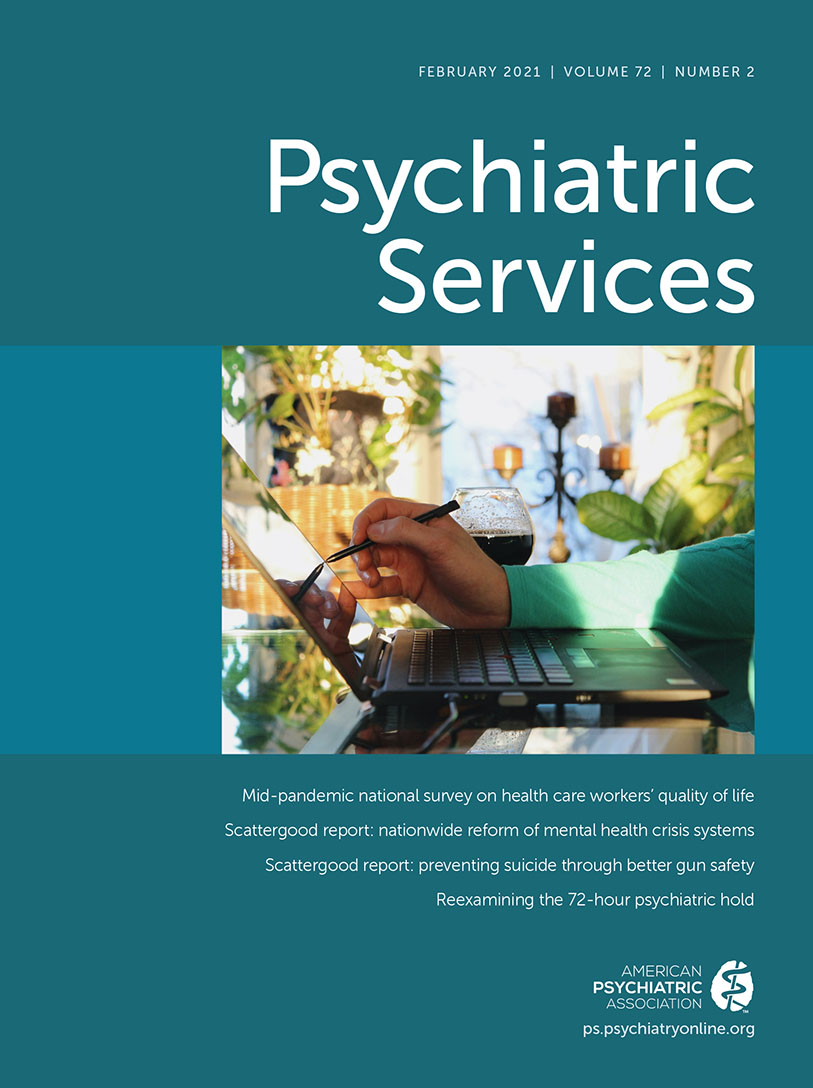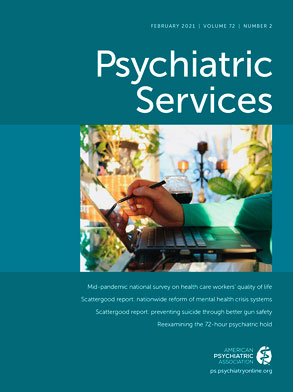TO THE EDITOR: Opioid overdose deaths have more than tripled over the previous two decades (
1), coinciding with a 43% growth in substance-involved incarcerations from 1996 to 2006 (
2). Consistent with national averages and typical treatment opportunities in jail, 60%−70% of people facing incarceration in California’s San Mateo County (SMC) are held on substance-related charges, often suffering withdrawal symptoms in the absence of comprehensive medication-assisted treatment (MAT) programming (
3).
MAT has been shown to reduce recidivism and postrelease opioid overdose deaths, among other benefits, and is the standard of care for incarcerated individuals with opioid use disorder (
3,
4). In 2019, SMC jails (census approximately 1,500 individuals) initiated buprenorphine treatment alongside established methadone and naltrexone treatment options. Using qualitative research methods adapted to a quality improvement framework, we set out to understand the facilitators and barriers to implementation of a MAT program in the correctional health setting. A literature review informed the construction of a semistructured interview guide. We identified clinical staff involved in MAT services (N=4), correctional health administrators (N=2), and community partners (N=2) and conducted 45-minute interviews with them. Interview summaries were independently coded by two research staff using thematic analysis, and differences were arbitrated by the senior author. The University of California, San Francisco, and SMC institutional review boards approved this study.
We found that participant attitudes toward MAT were polarized, including among the clinical staff. Those opposed to MAT expressed concerns that providing MAT was equivalent to providing illicit substances and frequently used the motto “skills, not pills” as a rebuttal to MAT. One perception was that evidence for MAT’s efficacy was insubstantial and lacked specificity for correctional populations. Most respondents felt that implementation was planned unilaterally and excluded stakeholder involvement. Another perception was that opioid usage was not a problem in SMC and that the risk of introducing MAT was outweighed by risks of diversion. In addition, participants raised concerns that the pharmaceutical industry was encouraging MAT implementation.
Proponents of MAT cited the differential benefits (lack of euphoria, long-acting injection formulation) of medications approved by the U.S. Food and Drug Administration and the risk of unintentional overdose death upon community reintegration as principal reasons to pursue pharmacotherapy.
Regardless of preference, respondents unanimously acknowledged that substance use disorders are a significant problem in SMC. All respondents suggested that diversion of MAT is a risk, although most felt that jail protocols (observed administration, not offering buprenorphine induction) curtailed diversion. All participants indicated that social supports were vitally important, although lacking, for those facing reentry.
Although MAT is a standard of care in correctional settings, our findings are similar to those in existing literature describing strong reservations among key stakeholders (
5). Our recommendations to facilitate more robust uptake of MAT implementation in corrections facilities include communication with frontline providers outlining reasons for initiating MAT, staff education regarding MAT evidence, and measures to address potential risks. Monitoring and sharing outcome data may demonstrate program efficacy and safety. Proactive engagement of a range of clinical and nonclinical stakeholders could encourage problem solving and prevent alienation during implementation of MAT. Finally, sustaining partnerships with community organizations and health systems is indispensable in coordinating patient care on release.

